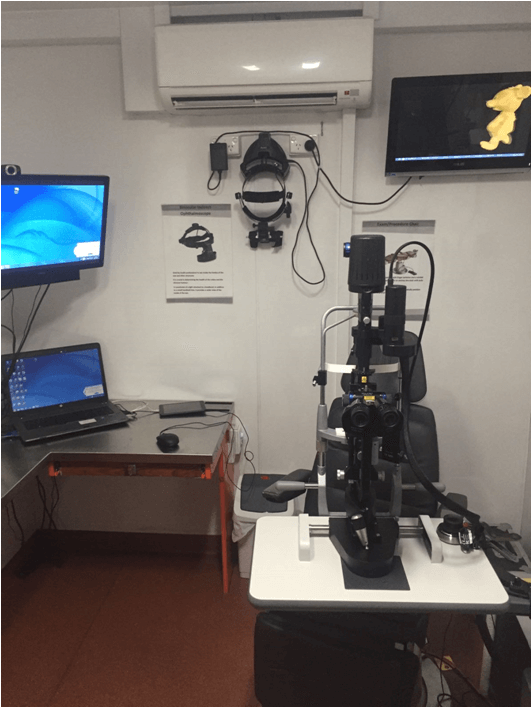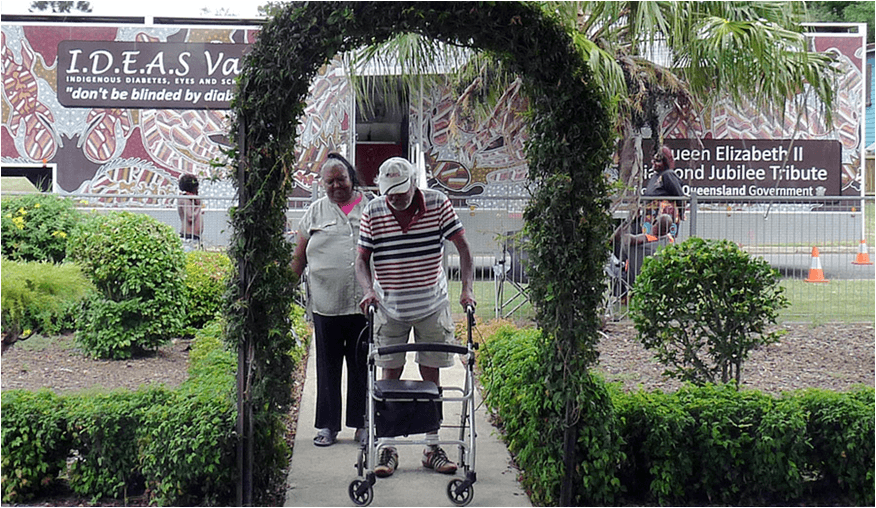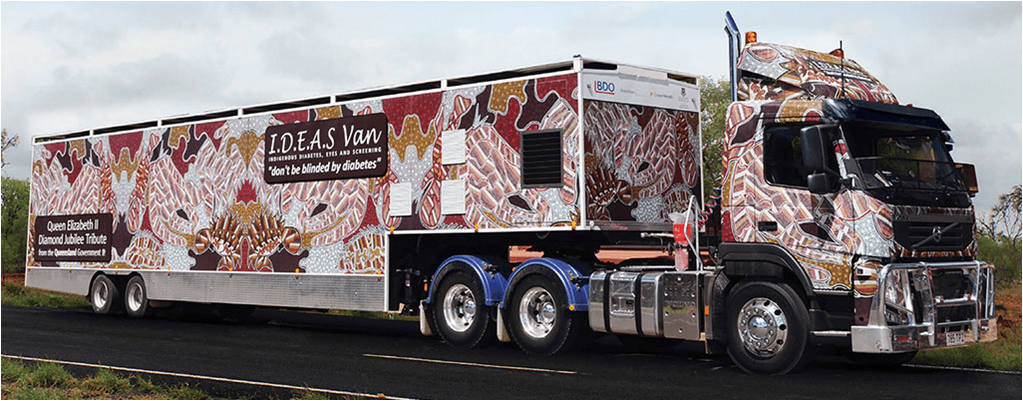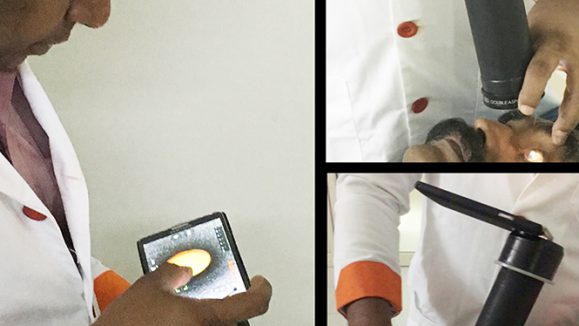Its epic size and vibrant design draws a crowd and turns heads, everywhere it goes. Even though this mighty truck and trailer may look like part of a caravan for a celebrity music tour, it carries a facility for an even more special type of rock star – you’ll understand who we mean in a moment. This is the IDEAS (Indigenous Diabetes Eyes and Screening) van, which travels more than 60,000 kilometers annually, delivering health and wellbeing services to both indigenous and non-indigenous people in the Bundaberg and Wide Bay region of Australia.
The IDEAS Initiative was launched at the end of 2013, following a $5 million Queensland Health donation to the Diamond Jubilee Partnership, as part of the Queen Elizabeth II Diamond Jubilee Celebrations. This health delivery model builds on the established Indigenous Wellbeing Centre (IWC) network, and now provides specialist ophthalmologist and optometrist services through a cutting edge, fully self-contained mobile facility. The ‘rock stars’ on board include a rotation of 20 optometrists, 17 ophthalmologists and their orthoptists and assistants, who devote one day a month from their own practices to work on the mobile eye clinic.
The mission of the IDEAS van is to address diabetes and the associated eye complications of indigenous people, which is key because this particular population was identified by the 2016 Australian Institute of Health and Welfare report as having a 3.5 times greater likelihood of having diabetes than the majority of the population. Further, reports have found that Aboriginal and Torres Strait Islander residents over the age of 40, have a 10 times higher rate of blindness than other Australians. As we know, screening, detection and early treatment are vital to preventing vision loss and blindness related to diabetic retinopathy, and in this group, 94% of the blindness is treatable or preventable.
Now, every year, thanks to a dedicated team of outreach health providers and members of the Aboriginal Medical Services, equipped with retinal cameras, more than 2,000 individuals from 51 rural and remote Aboriginal and Torres Strait Islander communities in Queensland undergo photographic eye screening. The images are digitally transferred to Sydney for expert grading and recommendation by Professor Paul Mitchell, MBBS, MD, PhD, FRANZCO, FRACS, FRCOphth, FAFPHM, of the Centre for Vision Research, Westmead Millennium Institute, New South Wales, Australia.
As a result, more than 750 patients are referred to the IDEAS van annually for diabetic eye care when it rolls into one of the 13 regional hubs servicing patients in the familiar setting of nearby Aboriginal Medical Services. It delivers the eye care facility right to the needs of the remote community.
“A key to preventing blindness is by improving patient compliance. The best way to improve patient compliance is to make it easy for patients,” explains David Bradley, BAppSc(Optom)
Grad Cert Occ Therapeutics DAEE, Optometrist and IDEAS van Clinical Advisor.
Another benefit of the IDEAS van visiting the Aboriginal Medical Services locations is that even when the van is not on site, the Aboriginal Health Workers have improved their knowledge and skills related to diabetes and diabetes eye disease.
A key member of the IDEAS van steering group, Professor Anthony Russell, MBBS, PhD, FRACP, Director of the Department of Diabetes and Endocrinology at Princess Alexandra Hospital, Queensland, Australia, describes the IDEAS van program as, “A great initiative to help rural and remote indigenous people access appropriate eye care. It has helped fill in the gaps in retinal screening and management of diabetic retinopathy across various parts of the State of Queensland. The IDEAS van program has assisted in helping aboriginal medical services implement a systematic approach to retinal screening that should have everlasting affects.”
Patients receive a full spectrum of world class care from the visiting team. Services can include diagnostics and imaging, refraction for spectacle correction, and even intravitreal injections and laser treatments. The team also provides preoperative measurements and assessments for required surgical procedures.
In addition to the eye care facility, the van is also equipped with fully functional telehealth accessibility, allowing for real-time consultations with additional specialists, hospitals and surgical centers. This is especially important because the management of diabetic retinopathy hinges on addressing and controlling the patient’s diabetes. Patients can be closely monitored by experts in endocrinology, like Prof. Russell, via teleconference and receive the appropriate diabetes care.
“The site of the magnificent van entering town acts as a “beacon” to focus people not only on their eyes but their diabetes as a whole,” Prof. Russell said. “This is also a crucial part of diabetes management, as addressing glycemic control and cardiac risk factors is ultimately going to save people’s lives.”
Continued support for the IDEAS van and the screening initiative has been received by numerous corporate sponsors and teams of volunteers. To date, more than 21,000 photos from about 4,000 patients have been assessed and more than 2,200 patients have received treatment in the IDEAS van. The hope is that over time, screening will eventually reach 20,000 of Queensland’s 150,000 indigenous residents.









